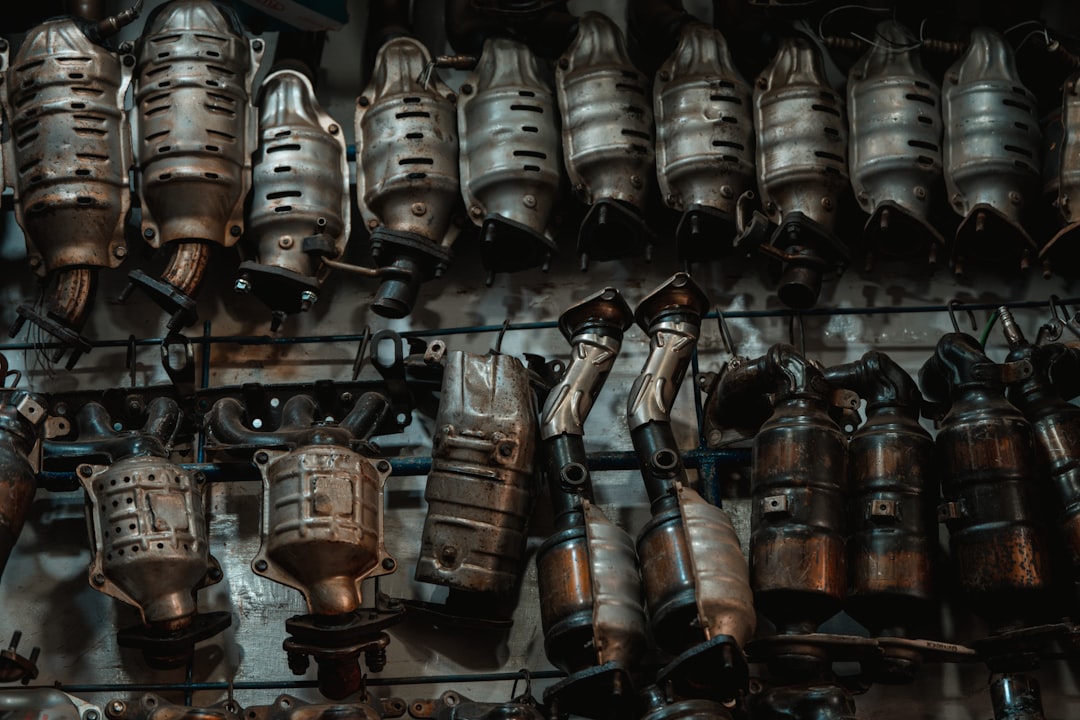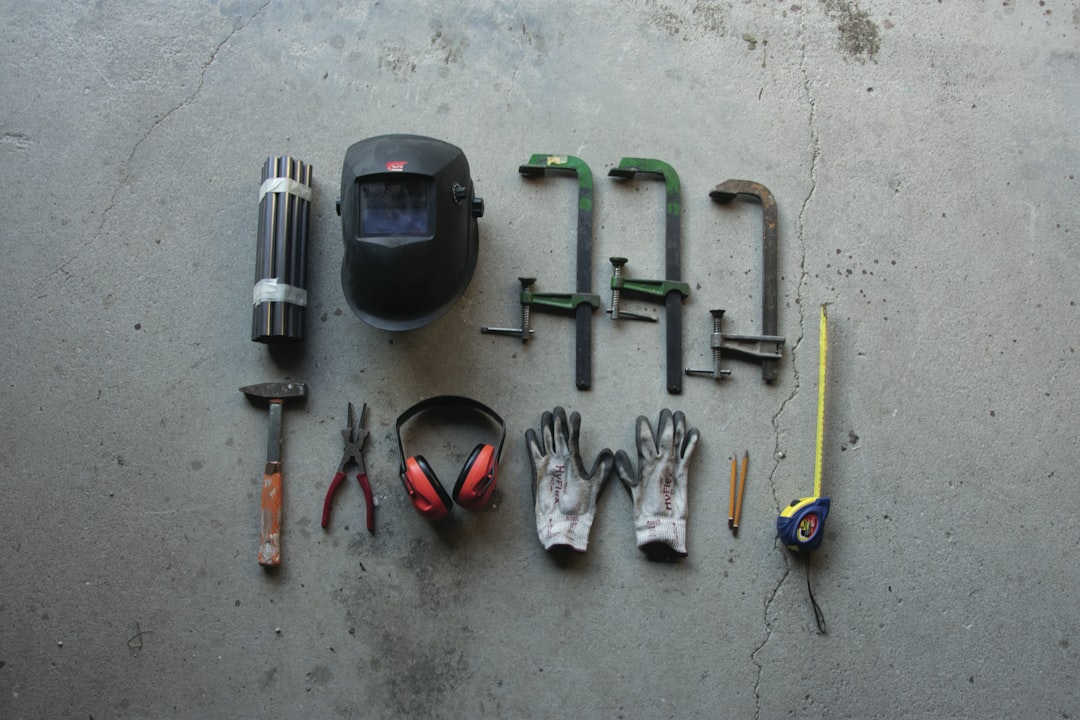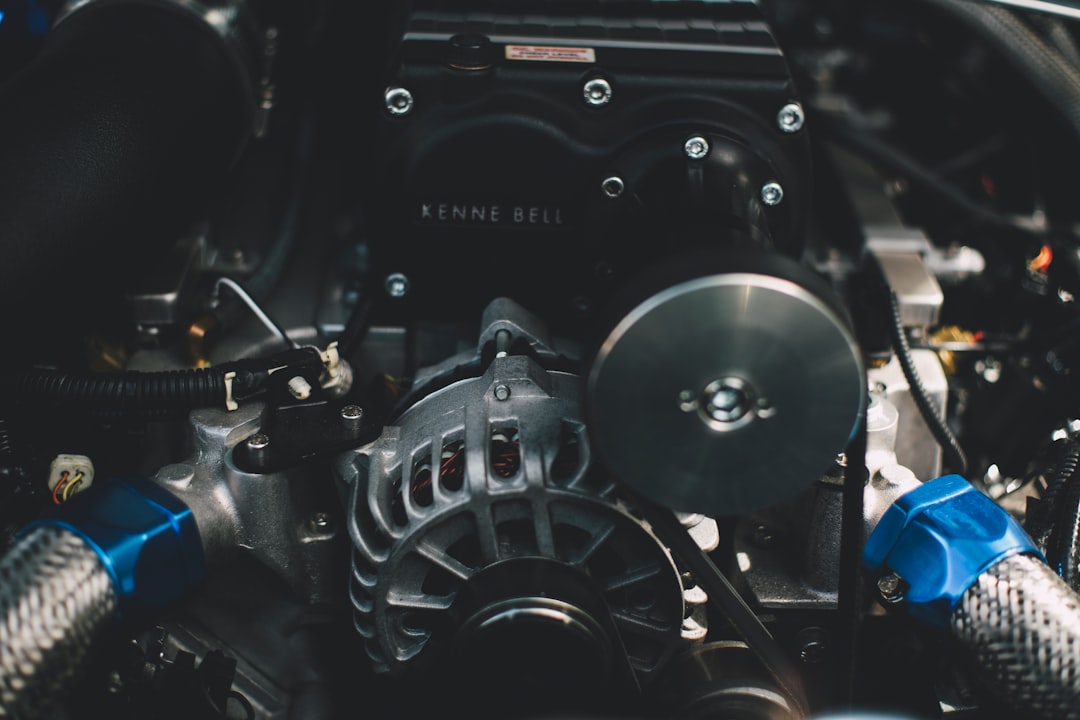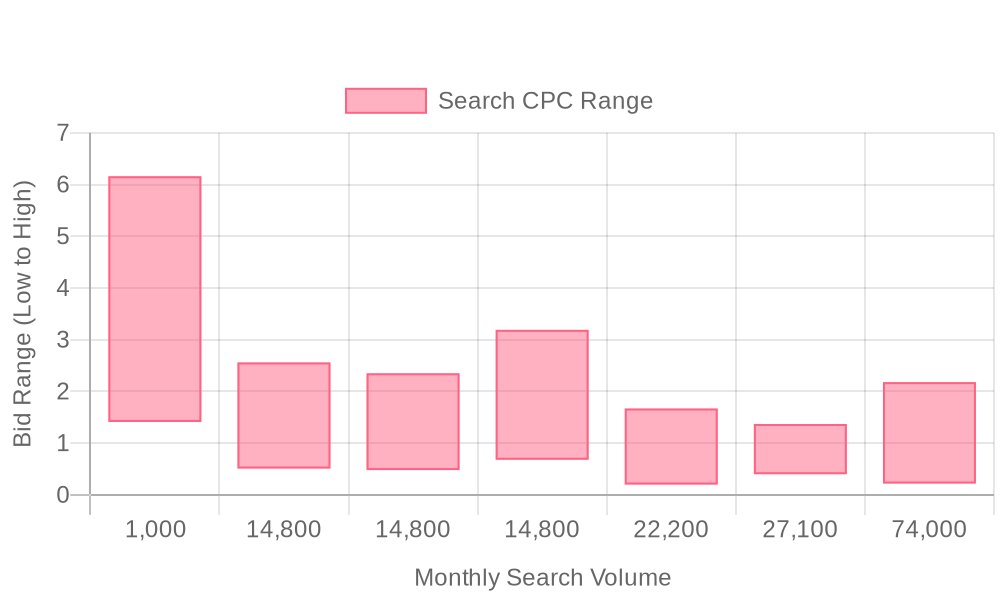
Supercharge your lead generation with a FREE Google Ads audit - no strings attached! See how you can generate more and higher quality leads
Get My Free Google Ads AuditFree consultation

No commitment
Supercharge your lead generation with a FREE Google Ads audit - no strings attached! See how you can generate more and higher quality leads
Get My Free Google Ads AuditFree consultation

No commitment
Navigating the digital advertising landscape can be challenging for those in the automotive equipment industry. With competition at an all-time high, capturing and converting leads is vital. One significant issue is missing out on high-value prospects who aren't tracked, leading to lost opportunities. Identifying potential leads early is crucial, as these prospects often browse services without submitting forms. Google's tailored solutions can help, allowing you to target potential customers precisely, enhance ad spend efficiency, and drive measurable results. Unlike traditional marketing channels, Google Ads puts your service in front of potential buyers when they're actively searching. This guide aims to provide a comprehensive setup framework, optimize your campaigns for enhanced visibility, and ensure lead quality.

In the automotive equipment sector, high-value leads are driven by accurate targeting and fast follow-up. Marketers who excel at integrating Google Ads with data-driven workflows consistently outperform those relying on siloed tactics.
Google Ads for Automotive Equipment delivers measurable results when aligned with a modern marketing stack. Companies that leverage both first-party data and real-time audience insights see higher conversion rates and stronger sales pipelines.
To put these strategies into action and streamline your automotive lead generation, get started for free with Sona.

Google Ads for Automotive Equipment delivers unmatched precision in reaching decision-makers actively searching for highly specialized machinery, parts, or service solutions. Its platform empowers marketers to efficiently align digital spend with sales targets, driving measurable results across complex B2B buying cycles. For a comprehensive overview of digital strategies in this space, see this guide to automotive digital advertising.
To streamline your campaign management and unlock the full potential of your digital marketing, get started for free with Sona.

For a comprehensive overview of automotive digital advertising strategies, explore this guide to automotive digital advertising. If you’re ready to put these strategies into action, get started for free with Sona.

Uncovering growth opportunities in automotive equipment marketing requires more than simply expanding search budgets or relying on traditional ad placements. Industry leaders are unlocking new sources of demand by moving beyond saturated digital channels and engaging buyers in specialized environments where purchasing decisions start earlier and intent is clearer. For a comprehensive overview of automotive digital advertising strategies and how to reach decision-makers throughout the funnel, see this automotive ads guide.

Defining precise audience segments is essential for effective digital marketing in the automotive equipment industry. Marketers who segment their campaigns by business type—such as new dealerships, repair shops, or fleet operators—avoid wasted spend on irrelevant clicks and ensure that offers and messaging are hyper-relevant to each group. For a deeper dive into automotive digital advertising strategies, explore this comprehensive overview of automotive ads. This approach allows for a budget strategy that reflects true market demand, so every dollar works harder toward high-value conversions.
Using real-time intent signals further refines your targeting by prioritizing prospects who actively research specific equipment, such as buyers searching for "automotive lift installation" or "OEM diagnostic scanners." These behaviors signal imminent purchasing decisions and enable the redirection of ad spend toward accounts most likely to convert. With advanced identification capabilities, marketers can go beyond anonymous web traffic and pinpoint the organizations or decision-makers visiting their site. This level of insight supports dynamic budget adjustments and ensures that ready-to-buy leads never slip through the cracks.
Highly targeted ad groups are the final layer in a sophisticated segmentation strategy. By aligning ad copy and offers to the audience’s purchase journey—such as educational content for early-stage researchers or demo offers for warm leads—marketers maximize both relevance and ROI. Dynamic audience updates, based on engagement or CRM data, ensure that messaging evolves as buyers progress through the funnel. This seamless sync between your ad platform and sales stack creates a unified view of every prospect, enabling smarter retargeting, more accurate measurement, and a consistent experience from first click to closed deal. Ready to power your segmentation? Get started for free with Sona.

| Industry | Keyword | Monthly Search Volume | Competition Level | Low Bid | High Bid |
| Automotive Equipment | automotive equipment | 1000 | HIGH | 1.41 | 6.16 |
| Automotive Equipment | 4 post car lift | 14800 | HIGH | 0.51 | 2.56 |
| Automotive Equipment | 2 post car lift | 14800 | HIGH | 0.48 | 2.35 |
| Automotive Equipment | car diagnostic tool | 14800 | HIGH | 0.68 | 3.19 |
| Automotive Equipment | car lift for garage | 22200 | HIGH | 0.2 | 1.67 |
| Automotive Equipment | air compressor for car | 27100 | HIGH | 0.4 | 1.37 |
| Automotive Equipment | car lift | 74000 | HIGH | 0.22 | 2.18 |
B2B revenue teams in the automotive equipment sector need a keyword strategy that targets decision-makers at the moment they express clear intent. By aligning search terms with the unique needs of procurement officers, fleet managers, and technical buyers, campaigns capture high-value opportunities before competitors are even aware of them. This approach leverages the intent signals embedded in searches like "precision vehicle parts supplier," "equipment promotions for dealerships," or "lease options for heavy duty lifts," connecting sales-driven organizations to buyers with urgent requirements.
Precision targeting elevates campaign efficiency by moving beyond surface-level demographics and focusing on real-time activity. Marketers gain an edge by pinpointing organizations and individuals visiting key product or technical pages, enabling immediate responses to warm leads. With advanced identification, teams can reallocate budget dynamically, prioritizing major accounts that show heightened buying signals such as repeat visits or engagement with specification sheets. This means ad spend is continually optimized to attract leads that matter most, driving better conversion rates and shortening the sales cycle.
A successful Google Ads strategy for automotive equipment leverages measurable ROI by blending digital signals with offline milestones. For example, by integrating CRM and call tracking data, teams can attribute revenue not just to form fills, but to completed equipment demos or signed contracts. This level of insight clarifies which keywords and ads drive the highest business value, allowing ongoing optimization of every touchpoint. Channel synergy is achieved when these insights inform campaigns across display, video, and social media, reinforcing brand presence and supporting multi-step B2B journeys. For a comprehensive overview of automotive digital advertising strategies, explore this automotive ads guide. Marketers can then deploy remarketing to re-engage stakeholders who have entered the pipeline, ensuring that messaging evolves as prospects progress from research to purchase decision.
Successful Google Ads for automotive equipment campaigns start with keyword lists engineered around service types and refined using location-specific modifiers. Precision clustering lets marketers tap into intent-rich searches, such as “heavy equipment repair Houston” or “OEM hydraulic parts Los Angeles,” reducing wasted impressions and elevating lead quality. For in-depth tactics on automotive digital advertising, explore this comprehensive overview of automotive digital advertising strategies. By prioritizing long-tail keywords, teams capture more motivated buyers while keeping CPCs competitive. Negative keyword filters are essential for excluding unrelated traffic, such as DIY searches or consumer-focused terms, ensuring the budget is invested only in commercial leads.
Leveraging modern data platforms, marketers can now pinpoint exactly which companies and decision-makers are searching for high-value equipment. Identifying anonymous website visitors and layering in firmographic data means high-priority accounts can be retargeted with higher bids or bespoke offers. As audience pools evolve, dynamically updated segments keep campaigns focused on those progressing through research and evaluation, making every keyword dollar actionable.
Compelling ad copy for the automotive equipment industry goes beyond generic value propositions. Messaging must reflect the specific pain points and requirements of each audience segment—whether targeting fleet managers concerned about downtime or procurement teams seeking compliance certifications. Clear, benefit-driven headlines like “Reduce Fleet Downtime with Certified Hydraulic Lifts” resonate much more than bland statements, while structured snippets showcasing ISO or OEM certifications drive credibility. For actionable ad creative examples, review real-world Google Ads success in automotive.
Marketers can further refine messaging by monitoring in-market behaviors and tailoring offers in real time. When a high-intent account starts evaluating product specs or downloads a whitepaper, ad copy can automatically highlight relevant case studies or limited-time financing options. This adaptive approach not only boosts engagement but also accelerates the path from click to qualified lead, increasing overall conversion rates.
Landing page experiences must be meticulously matched to ad groupable offers to ensure continuity and relevance. When a campaign promises a quote on bulk transmission components, the landing page must deliver a frictionless process for requesting that quote, complete with detailed product information and transparent pricing options. For best practices on increasing conversion rates, see tips for optimizing PPC landing pages for automotive. Including trust elements—testimonials from industry peers, compliance badges, or mini case studies—reduces buyer hesitation and reinforces the brand’s authority in automotive equipment.
The integration of data enrichment tools allows marketers to personalize landing pages for returning prospects based on prior engagement. For example, visitors from key accounts can see pre-populated forms or content tailored to their segment, drastically improving submission rates. This alignment between ad and landing experience not only addresses conversion drop-off but also enhances the overall quality of leads entering the pipeline.
Continuous optimization is non-negotiable in high-competition sectors like automotive equipment. Marketers must monitor both micro-conversions (such as spec sheet downloads) and macro-conversions (such as demo requests or RFQs), using automated bidding strategies like Max Conversions to direct spend to the highest-performing segments. To understand how Google Vehicle Ads are shaping the market, see this analysis of Google Vehicle Ads' impact on the US automotive advertising landscape.
Advanced analytics sync both online and offline conversion data, allowing for smarter, more accurate bidding decisions. When a sales-qualified lead is logged in CRM or a deal is closed offline, real-time data feeds can automatically update audience pools and inform future budget allocation. This feedback loop empowers marketing and sales teams to work from a single source of truth, ensuring every optimization is grounded in actual revenue impact, not just digital form fills.
Expanding your automotive equipment presence demands a blend of technical acumen and audience intelligence. By integrating targeted digital tactics, brands unlock higher engagement and sustainable revenue growth.
Promoting educational materials through retargeting campaigns is a proven way to support engagement initiatives. Sharing technical guides, product demos, and industry whitepapers keeps your brand top-of-mind while cultivating more informed prospects. When retargeting, real-time visitor identification allows you to recognize high-value organizations returning to your site, not just anonymous clicks. This empowers marketers to deliver granular, relevant educational assets to those accounts most likely to convert.
Upselling becomes more effective when segmented lists are formulated from CRM insights. By syncing enriched audience segments—such as previous buyers of diagnostic tools or those interested in heavy machinery—directly into ad platforms, you can serve personalized offers that reflect each segment’s buying history. These campaigns consistently outperform generic upsell efforts, driving higher average order values and improving retention.
Fostering growth in new locales requires campaigns tailored to local demand nuance. Automotive equipment needs can vary widely based on geography, such as regional regulations or infrastructure projects. By analyzing geographic performance data, marketers can deploy campaigns that reflect specific market conditions, from city-based service ads to rural heavy equipment promotions. For a comprehensive playbook on PPC strategy tailored to heavy equipment, see this strategic guide for dealers.
Leveraging trend data for content creation guarantees alignment with real-time market dynamics and audience behavior. Monitoring industry search trends, seasonal demand spikes, and competitor activity allows for content and campaign strategies that anticipate what buyers need next. Marketers who embed trend analysis into their workflow consistently see better performance from both paid and organic channels, as content stays relevant and actionable for every stage of the buyer journey.
Mastering Google Ads for Automotive Equipment is not just about setting up campaigns; it’s about building a responsive, data-driven engine that supports every aspect of your go-to-market strategy. Addressing challenges like slow follow-up or lack of visibility early ensures you capture quality leads ready to convert. For step-by-step guidance on automotive PPC, refer to this guide to automotive PPC advertising. To accelerate your strategy, get started for free with Sona.
As we wrap up our exploration of utilizing Google Ads to drive success in the automotive equipment industry, it's clear that digital advertising holds the key to unlocking new opportunities. By strategically leveraging Google Ads, you can effectively promote your products, attract potential customers, and generate high-quality leads that drive growth.
Throughout this article, we've tackled the core challenges of reaching your target audience, optimizing ad performance, and maximizing ROI. With insights into keyword selection, ad targeting, and performance analysis, you now have the tools to enhance your advertising strategy and elevate your brand's presence in the competitive market.
The potential for transformation lies in your hands. By implementing these strategies, you're positioned to not only meet but exceed your business goals. Embrace this opportunity to connect with customers more effectively and establish a strong foothold in the industry. Your path to success is paved with informed decisions and strategic execution.
To experience a new level of data-driven marketing insights, start for free and discover how our platform can empower your efforts in reaching and engaging your audience with precision.
Best practices include aligning Google Ads with broader marketing objectives, implementing targeted keyword and audience strategies, optimizing ad creatives and landing pages, and continuously integrating channel data for a holistic view of performance.
To optimize Google Ads for automotive equipment, focus on precise targeting with keywords and audience strategies, align ad creatives with buyer needs, and use data-driven tactics for continuous improvement in cost-per-lead and conversion rates.
Budget allocation should reflect true market demand and be directed towards high-value segments identified through precise audience segmentation and keyword strategy, ensuring every dollar supports conversions and revenue goals.
Targeting options include using advanced audience segmentation based on business type and intent signals, enabling precise delivery of messaging to decision-makers like procurement officers and fleet managers.
Success is measured by integrating Google Ads data with CRM systems to track conversions from ad clicks to offline sales, ensuring a clear attribution of revenue to specific campaigns and continuous optimization based on real-time data.
Join results-focused teams combining Sona Platform automation with advanced Google Ads strategies to scale lead generation

Connect your existing CRM

Free Account Enrichment

No setup fees
No commitment required

Free consultation

Get a custom Google Ads roadmap for your business
Join results-focused teams using Sona Platform automation to activate unified sales and marketing data, maximize ROI on marketing investments, and drive measurable growth

Connect your existing CRM

Free Account Enrichment

No setup fees
No commitment required

Free consultation

Get a custom Google Ads roadmap for your business
Over 500+ auto detailing businesses trust our platform to grow their revenue
Join results-focused teams using Sona Platform automation to activate unified sales and marketing data, maximize ROI on marketing investments, and drive measurable growth

Connect your existing CRM

Free Account Enrichment

No setup fees
No commitment required

Free consultation

Get a custom Google Ads roadmap for your business
Over 500+ auto detailing businesses trust our platform to grow their revenue
Join results-focused teams using Sona Platform automation to activate unified sales and marketing data, maximize ROI on marketing investments, and drive measurable growth

Connect your existing CRM

Free Account Enrichment

No setup fees
No commitment required

Free consultation

Get a custom Google Ads roadmap for your business
Over 500+ auto detailing businesses trust our platform to grow their revenue
Join results-focused teams using Sona Platform automation to activate unified sales and marketing data, maximize ROI on marketing investments, and drive measurable growth

Connect your existing CRM

Free Account Enrichment

No setup fees
No commitment required

Free consultation

Get a custom Google Ads roadmap for your business
Over 500+ auto detailing businesses trust our platform to grow their revenue
Our team of experts can implement your Google Ads campaigns, then show you how Sona helps you manage exceptional campaign performance and sales.
Schedule your FREE 15-minute strategy sessionOur team of experts can help improve your demand generation strategy, and can show you how advanced attribution and data activation can help you realize more opportunities and improve sales performance.
Schedule your FREE 30-minute strategy sessionOur team of experts can help improve your demand generation strategy, and can show you how advanced attribution and data activation can help you realize more opportunities and improve sales performance.
Schedule your FREE 30-minute strategy sessionOur team of experts can help improve your demand generation strategy, and can show you how advanced attribution and data activation can help you realize more opportunities and improve sales performance.
Schedule your FREE 30-minute strategy sessionOur team of experts can help improve your demand generation strategy, and can show you how advanced attribution and data activation can help you realize more opportunities and improve sales performance.
Schedule your FREE 30-minute strategy session





Launch campaigns that generate qualified leads in 30 days or less.
